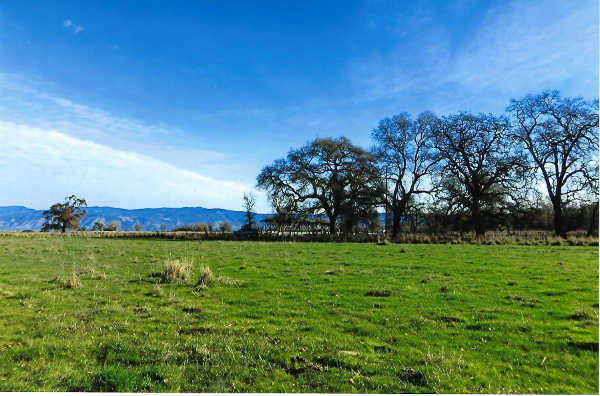LAKEPORT, Calif. – The Board of Supervisors on Tuesday took community members’ input on a proposed hazardous vegetation ordinance that aims to put an abatement focus on unimproved parcels but has raised concerns due to its fines and the potential for making neighbors responsible for cleanup costs.
Board Chair Jim Steele, who said he has worked for a year and a half on the proposal, had asked the board to consider the
draft document, which has undergone several updates over the past month.
It was explained during the meeting that the proposal came about after fire protection districts brought to the county a request to act on the matter. That led to Steele organizing a committee that resulted in the formation of a joint powers authority to increase fire safety that the board approved earlier this year.
Steele said fire officials wanted the county to accept
Public Resources Code 4291, which governs defensible space rules, and apply it to the local level, specifically, to unimproved parcels, which the state law doesn’t cover. He said it introduces fines to get landowners to comply.
On Tuesday, Steele highlighted the imperatives of getting ahead of fire season and being able to apply for grant funding for the joint powers authority.
During public comment on Tuesday, community members applauded the board for trying to do something, but also questioned the document for what they perceived as an overly punitive approach.
Mary Jane Montana, the county’s chief building official, would serve as the “county fire official,” as defined in the document.
In response to concerns about fines, Montana said that property owners would be contacted and told to abate the nuisance vegetation before fines or other action was taken.
“Fines are not the first step. They’re the next to the last step that we use to gain compliance,” she said, explaining that notification and education are the first steps, with abatement coming later in the process.
Supervisor Rob Brown pointed out that if fire season starts in April, and continues to November as it did this year, nobody can do the abatement, referring to a prohibition on mowers and other power tools during that time because of fire danger.
“It has to be handworked, essentially,” said Montana.
“That’s not realistic,” said Brown.
Montana said the county could be flexible with larger properties, and in January and February – a quieter time of year for the Community Development Department, which will be tasked with the work – they would determine which properties need abatement so as to move on them before fire season. “This is going to take a significant effort on the part of our department,” she said.
Michael Kramer, who owns both improved and unimproved parcels, said he can see it from different perspectives. However, he told the board that he has tried to make the case that improved lots present fire dangers to neighbors as well. He suggested half of the landowners in county aren’t covered by the ordinance.
Kramer also questioned why the ordinance is necessary if similar language is contained in other county regulations.
Jessyca Lytle of Cobb raised a variety of issues, from the training of county staff to how the ordinance would impact timber harvest plans and conflict with forest practices, utility easements, parts of the document that were repetitive.
She said community members want a fire ordinance, but they don’t want it to cause undue stress on financial resources. As someone with experience in grant writing, she said she understood concerns about being able to pursue grant funds.
“Let’s do it right the first time,” she said.
“It’s not going to happen. This is going to be a work in progress for some time to come, believe me,” said Steele.
Lytle said she is completely in favor of an ordinance, but not the way the current one is written.
Stephanie Rick, who owns property in Nice, said the draft ordinance, as proposed, could bury Lake County in litigation because of issues with property rights. She had particular concern over the document’s requirement to have adjacent landowners pay to help clean up unimproved lots in order to give them 100 feet of defensible space. “I should not be forced into liability for something that is not mine.”
Julie Richardson, a real estate agent who owns eight acres of unimproved land and is on a local fire safe council, said the ordinance is poorly worded.
She pointed out the difficulty of finding contractors to remove brush. Richardson said she was given a list of 10 contractors in February of last year and tried to hire one for work on her land.
“Not one single contractor returned my call,” she said. When she did finally track one man down, he told her he was booked months ahead.
Board members weigh inIn his comments on the document, Supervisor Brown said that improved properties are the most dangerous when it comes to fire danger, although he acknowledged that fuel load is an issue, which is the motivation behind a benefit assessment district for vegetation abatement he’s working on in Kelseyville.
He said there are many property owners who want to do the right thing in removing vegetation, but it is very expensive.
Brown questioned how to property lines would be determined, said he didn’t want the joint powers authority to manage county funds and faulted the document for including dried leaves, tumbleweeds and severely damaged trees as hazardous vegetation, particularly the trees.
“We’re asking for trouble here. Severely damaged trees – there’s a whole forest of them up on Cobb,” he said, explaining that such trees are not combustible.
Brown also pointed out that the county has 3,000 lots, at least, and that the Bureau of Land Management and other agencies also own large amounts of property. He asked if they were going to hold themselves to the same standard as private property owners.
He said District Attorney-elect Susan Krones also wishes to review the document. The ordinance includes the possibility of prosecution by the district attorney for failure to comply. “It’s fair that she be allowed that opportunity.”
During the meeting, Steele had referred to 35 other counties working on similar hazardous vegetation ordinance efforts. Brown asked him if any of them had anything Lake County could look at. Steele said they are all looking at Lake County right now.
Steele wanted to get the updated ordinance back before the board by next Tuesday, but County Counsel Anita Grant said she wouldn’t be able to turn around a document updated with all of the proposed changes by next week. That also didn’t give enough time for Krones’ review.
Supervisor Moke Simon said there were great suggestions from the board and public. However, timing wise, “We’re going to need more time to get this thing put together,” he said, as he felt the ordinance needed more refining. He suggested it could be ready by early February.
Steele disagreed with delaying the document’s progress, explaining they would miss fire season and that the county is in competition with other counties for grant funding.
Grant then offered a solution, suggesting staff prepare a resolution that outlines the board’s intent with the ordinance and includes its basic tenets. That, she said, could be ready for Tuesday.
Steele called her a genius and asked that such a resolution include all of the intended protections. “That’s not a bad idea.”
Brown said the first part of the draft ordinance can be turned into a resolution very easily.
“What we’re trying to do is corrective, not punitive,” Brown said, adding that the board has only had the document for a short time, and that it’s been in the fire districts’ court over the last few years. “We’ve done a lot of work on this in the last month.”
Steele voiced his frustration after working on the effort for 18 months.
However, Grant said, “Oftentimes, for grant funders, we’ve found that resolutions of purpose do show the pathway the county’s intending to walk and it does have some significance.”
Steele said the board would hear the resolution next week.
Email Elizabeth Larson at This email address is being protected from spambots. You need JavaScript enabled to view it.. Follow her on Twitter, @ERLarson, or Lake County News, @LakeCoNews.
121118 Lake County Board of Supervisors - Updated hazardous vegetation abatement draft ordinance by LakeCoNews on Scribd



 How to resolve AdBlock issue?
How to resolve AdBlock issue? 








